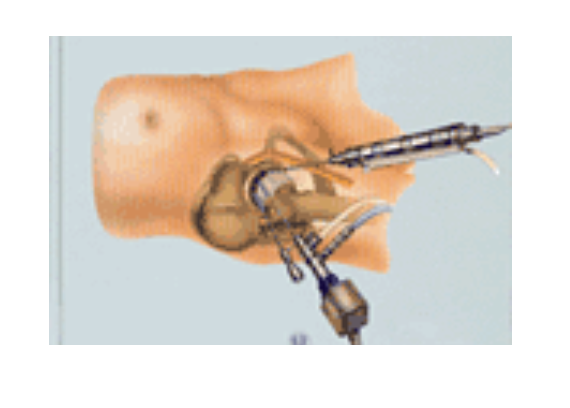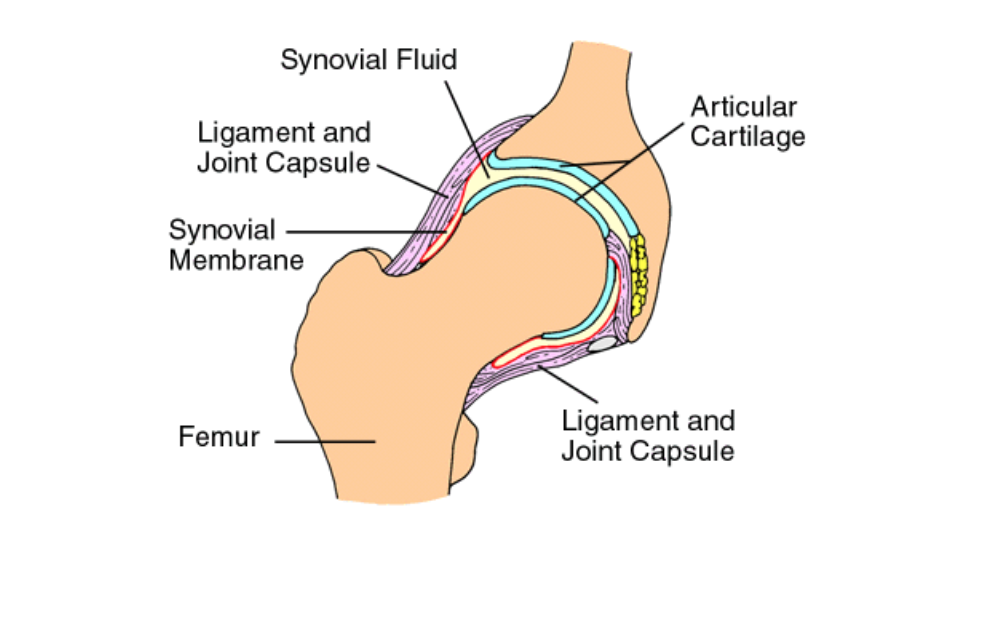Hip Anatomy
 The hip joint is composed of a ball and socket joint. The femoral head (ball) is the top of the femur (thigh bone) and the acetabulum (part of the pelvis) is the socket. These surfaces are both covered by articular cartilage, which is a specialised lining allowing smooth pain free motion of the joint. Damage to this lining results in arthritis.
The hip joint is composed of a ball and socket joint. The femoral head (ball) is the top of the femur (thigh bone) and the acetabulum (part of the pelvis) is the socket. These surfaces are both covered by articular cartilage, which is a specialised lining allowing smooth pain free motion of the joint. Damage to this lining results in arthritis.
The joint is lined by a specialised synovial layer, which secretes fluid helping with lubrication. Inflammation of this layer is called inflammatory arthritis, the most common of which is rheumatoid arthritis.
The labrum is a specialised structure adding to stability of the joint. The labrum runs around the rim or edge of the acetabulum. Damage to this structure can result in catching and pain in the joint. The capsule surrounds the synovium stabilising the joint.
There are also several strong ligaments holding the hip joint in place. Around the joint are muscles which move the hip and the hip to move.

